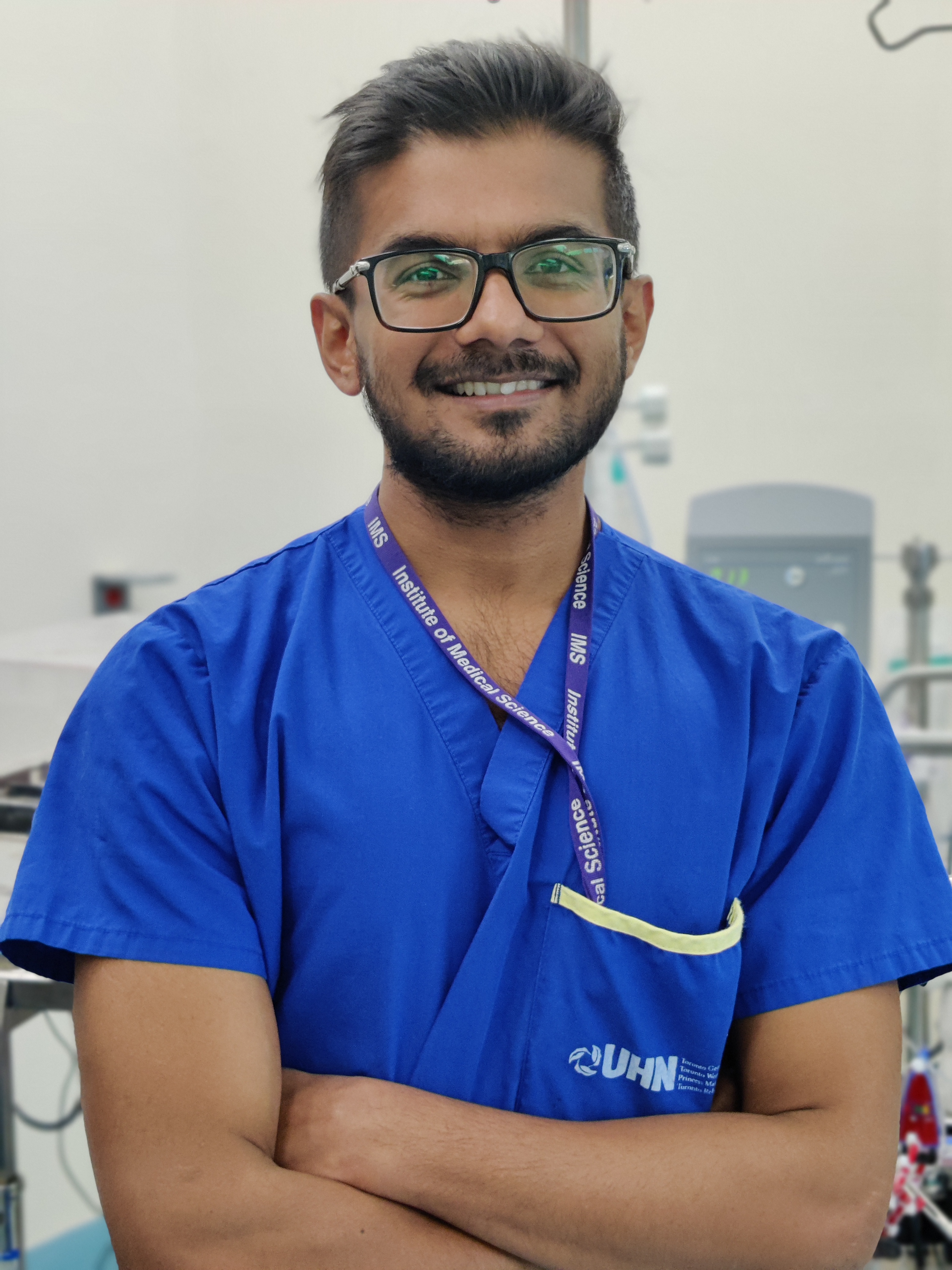Samrat Ray, Canada has been granted the TTS-CST International Transplantation Science Mentee-Mentor Awards

Establishing the most physiological perfusion milieu for normothermic ex vivo pancreas perfusion in porcine models: how far have we reached?
Samrat Ray1,2, Catherine Parmentier1,2, Kawamura Masataka1,2, Bhranavi Arulratnam1, Yuki Noguchi1,2, Emmanuel Nogueira1,2, Sujani Ganesh1, Markus Selzner1,2, Trevor Reichman1,2.
1Toronto Organ Preservation Laboratory, Toronto general hospital, Toronto, ON, Canada; 2Ajmera Transplant Centre, Toronto general hospital, Toronto, ON, Canada
Introduction: The basic tenet of normothermic machine perfusion is to simulate the physiological milieu for perfusing the organ as close to the homeostasis as possible. Despite its success in lung and kidney transplant models, similar results could not be replicated in pancreas models owing to vulnerability of the organ to oedema and reperfusion injury. We, hereby summarise our experience so far in achieving the most conducive environment for the pancreas perfusion by altering composition of perfusing and dialysing fluids used in the machine to establish an “ideal” model of normothermic ex-vivo pancreas perfusion (NEVPP).
Methods: The perfusate being used in NEVPP of porcine grafts (Yorkshire male pigs, 40-45 kgs) so far at our laboratory has been a modified version of our already established solution used in kidney perfusion models comprising of Steen’s solution (containing Dextran), leucocyte depleted porcine blood, electrolyte composition and trypsin inhibitor. In addition, a dialysing solution comprising of electrolytes and standard hemodialysis concentrate and sodium pyruvate is added to the circuit. By altering osmolality and sodium concentration of the perfusate (addition of hydroxyethyl starch and NaCl) and dialysate (addition of varying concentrations of NaCl), we assessed the physiological and biochemical parameters of the graft over 3 hrs of perfusion and compared with 3 best experiments from the previously established model (Standard NEVPP).
Results: The average weight gain was found to be lower (25-33%) in grafts perfused with addition NaCl in the dialysate as opposed to the standard NEVPP model (45-50%). The best hemodynamic milieu (maximum arterial flow 200 ml/min at minimum pressure of 16 mm Hg) could be achieved by addition of 1gm/L of NaCl to dialysate along with increasing the CO2 concentration in the circuit to 9% as opposed to the standard 5%. The graft oedema as well as duodenal congestion was also minimum in this subset of the model (Figure 1).

Addition of NaCl to the dialysate also resulted in achieving a more stable peak in the amylase levels (marker of graft injury) in the perfusate over 3 hrs compared to the standard NEVPP model (Figure 2). Similar trends were observed in this subset with lipase (average peak (3 hrs): 2885 U/L), LDH (average peak (3hrs): 576 U/L) and CPK (average peak (3hrs): 1120 U/L) levels. The oxygen extraction ratio remained in the range of 25-40 in this subset and was unaffected by altering the CO2 concentration to 9%. The histopathological comparison of tissue injury was also analysed.

Conclusion: Owing to the precarious hemodynamics of pancreas, establishing optimal conditions for NEVPP is a formidable challenge. However, meticulous cold dissection, minimum handling of the organ while on the machine along with a relatively hyperosmolar composition of the dialysing solution has shown promising results so far.

right-click to download
